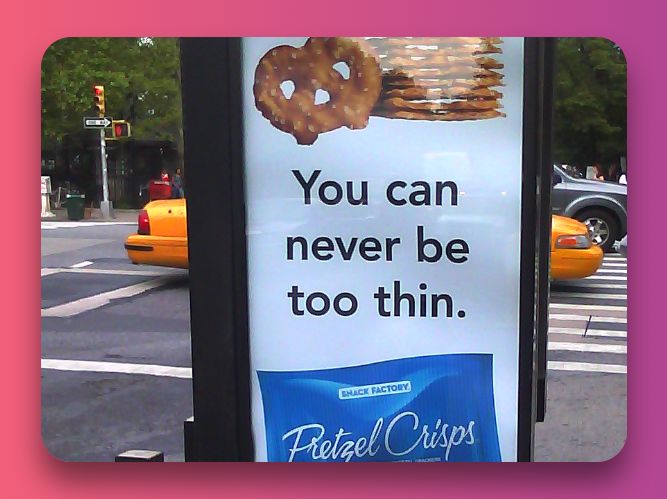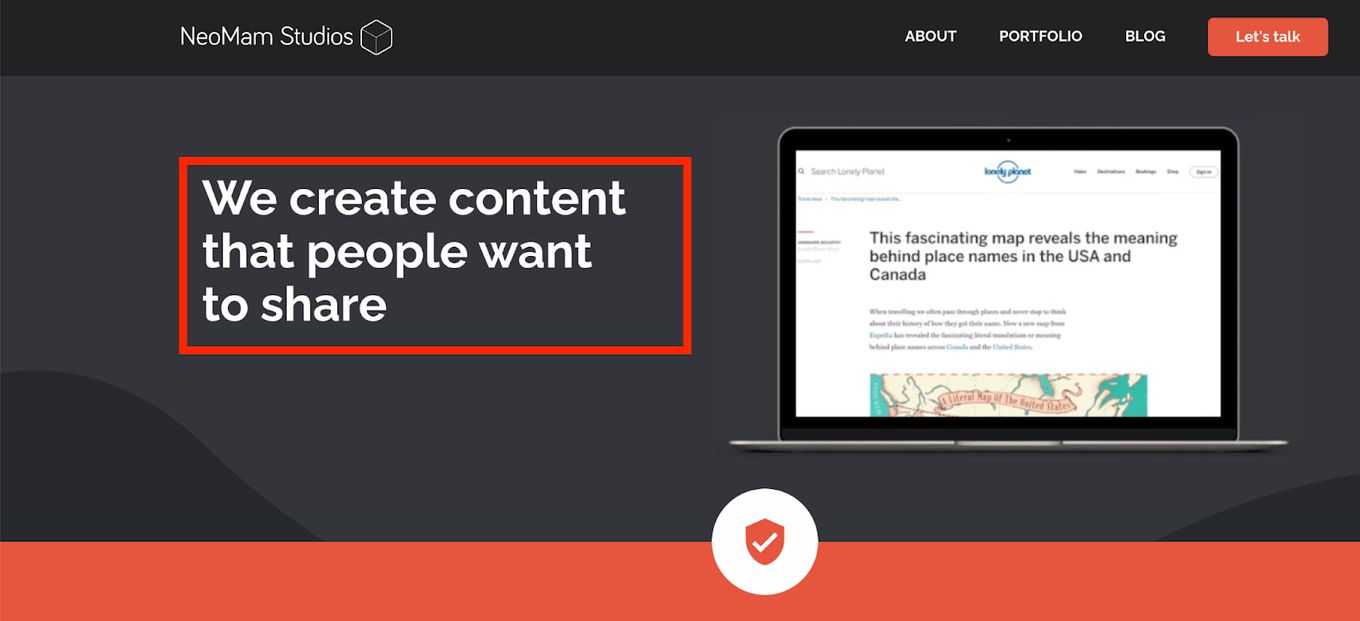Your tagline is a short phrase that helps people understand what your website or company does or specializes in. If you don’t have a tagline, it’s time to write one. Taglines are still relevant and are important for helping people understand your website, particularly when they’re not familiar with who you are.
In this article, we’ll take a look at what a tagline is, why you need one, how to come up with the best one for your brand, and some examples of great taglines—and some not-so-great ones—so you can start brainstorming ideas for your own.
What Is A Tagline On A Website?
A tagline is a short statement that describes the brand or product. It can be used to describe a company, product, or service. Taglines are usually found in the logo and marketing materials of any business, but they’re also commonly used on websites.

Why Do You Need A Tagline?
You need a tagline because it helps remember you and what you offer. It’s the first thing people see when they visit your website or social media page, and it can help you make an immediate connection with them.
If you’re still wondering why you need a tagline, here are some of the main reasons:
- A tagline helps consumers remember you. If someone hears or reads your tagline and remembers it, they’ll be more likely to associate it with your brand.
- A tagline gives people a reason to buy from you. Consumers often need a reason to pick one product over another, so having a unique tagline can help them make their decision.
- A tagline helps build trust with potential customers by proving that you have something special to offer them—and that’s what makes them want to buy from you!
What Should I Write in Tagline?
- Quote. Use a quote that speaks to your business and the emotions you want to evoke in people.
- Promise. Promote something unique or exclusive on your website, like free shipping within the U.S., or the first look at new products before they’re released anywhere else online.
- Value Statement. Tell people why they should do business with you by highlighting what makes your product or service unique in comparison to other options out there (e.g., “we only use natural ingredients”).
- Call To Action (CTA). A CTA tells users what action they should take after reading the tagline (e.g., “Shop Now” or “Sign Up”). It’s especially important if your goal is lead generation; without one of these prompts, visitors won’t know how best to engage with this content!
Tips for Composing Winning Taglines
Writing a tagline is one of the hardest things to do in marketing. We’ve all seen those catchy, one-liner taglines that make you want to buy the product immediately. But how do you write a tagline?
Here’s our step-by-step guide to writing your killer tagline!
-
Define Your Brand. What is the purpose of your brand? What do you want it to stand for? When people think of your brand, what words come to mind? Start with a blank piece of paper and write down all of the words that come to mind when you think about your brand or product. Write down every single word that’s even remotely related—no matter how silly it sounds!
-
Choose the right words. Look through all of those words and pick out the ones that are most closely related. Those will be your main keywords for this exercise.
-
Put those keywords into one sentence. Then add some adjectives that describe your brand as well as some verbs that show what kind of action they do (or will do). You can also include some nouns if they’re relevant to your brand or product—but only if they’re useful to describe what makes your brand unique!
-
Make it sound natural. Once you’ve got your sentence down, try reading it out loud several times until it sounds like something someone would say in conversation—not something that sounds like an ad! If it doesn’t sound natural after reading, then come up with a few other words that describe what makes your brand special and what sets it apart from other brands in its category. This step is crucial because these words will become part of your tagline!
-
Give the last touch: After coming up with that, repeat those words over and over again until they start sounding like gibberish! That’s right—you need to keep repeating those words until they become meaningless (or at least make sense in their own way). Then, when someone asks you what your company does, say “we do [insert gibberish].” And voila! You’ve got yourself a tagline!.
What Your Website Tagline Should Not Be

When it comes to your website, you can’t just throw anything onto the page and expect it to work. You need a tagline that connects with your audience and inspires them to take action—and we’ve got a list of five things your website tagline should not Be or Do!
-
It’s Too Long. If your tagline is too long, it will be difficult for people to remember. Keep it short and sweet!
-
It Doesn’t Reflect Your Business. Your tagline should accurately reflect the nature of your business. Don’t use a tagline that sounds like it belongs on another website.
-
It Doesn’t Emphasize Your Unique Selling Proposition (USP). Your unique selling proposition is what makes you stand out from your competitors. If you don’t emphasize this in your tagline, then you’re missing out on an opportunity to highlight what makes you special!
-
It Doesn’t Connect With Your Target Audience. Be sure that your tagline connects with your target audience and resonates with them emotionally so they remember it easily when they’re ready to buy something from you! This can be done by focusing on what matters most to them—price point, quality, or something else entirely.
-
Don’t use jargon. Jargon isn’t just hard for non-experts to understand; it’s also confusing for anyone who might not be familiar with the industry you’re working in. If someone doesn’t know what “PPC” means, they probably won’t know what kind of services you provide either! Keep things simple so that everyone understands what you do and can easily find out more about it.
How to create an effective tagline for your website

Taglines are meant to speak to your potential customers in a way that makes them want to learn more about your product or service. The best taglines make it clear what the benefit of your product or service is, and why it’s better than any alternatives. It is a marketing statement that describes the most important benefit of your product or service.
In addition to being clear, a good tagline should be memorable, too. That’s because people often remember something they hear once—especially if it’s something that makes them laugh or cry—but they rarely remember something if they have to think about it for more than 30 seconds.
For example, the tagline for [company name] is “Making the world a better place, one smile at a time.” This tagline tells customers what we do and how we can help them: we make their lives easier by making their smiles beautiful.
Examples of Great Website Taglines
- “We make tech simple” – Microsoft
- “The world’s largest digital camera.” (Nikon)
- “Here’s to the Crazy Ones, Think Different” (Apple)
- “The world’s most powerful processor.” (Intel)
- “We make money so you don’t have to.” — Capital One
- “The world’s largest marketplace for goods and services.” — Amazon
- “Making life easier with possibilities like never before.” — Verizon Wireless
A good tagline can help you get noticed and build trust with customers. It can also help set your brand apart from competitors who offer similar products and services.
Examples of Bad Website Taglines
- “We make it easy to find and book the best places.” (A one-size-fits-all approach that doesn’t explain how you’re different from your competitors.)
- “Leading provider of life insurance, auto insurance, and home insurance.” (A slogan that sounds like a text ad.)
- “Let’s build something together!” (Too vague to be useful for anyone other than the company itself.)
Website Title Example
Your website title should be a combination of your name or brand and a keyword that describes what you do.
-
Try using your name as the title: Your name is probably the most memorable thing about your business, so it makes sense to incorporate that into your website’s title. For example, if you’re named Bob’s Bistro, then “Bob’s Bistro” could be an effective way to get people interested in visiting your site and learning more about what you offer.
-
Use a keyword-focused title: When optimizing for search engines (which we’ll talk more about later), it can be useful to include keywords in your domain name or site titles. This helps with ranking when someone searches for those terms online; however, make sure they don’t sound too forced or unnatural when used together like this!
Otherwise, users might become confused by what they see on screen—or even worse: leave immediately without reading any further content because they think it looks spammy/sketchy/fake etcetera).
A good rule of thumb would be using two different ones at most (either both at once separated by punctuation such as periods between them) unless there are multiple meanings behind one word which would qualify each meaning individually instead; otherwise stick with only one meaning per word!
Conclusion
The goal is to make your tagline as clear and concise as possible. If you want people to know what your business does, give them a clear description in just a few words. And if you want customers to take action, include a CTA!
This matters because your tagline is one of the first things potential customers will see when they encounter your brand. It’s important to ensure that it accurately reflects what your business does and why someone should care about it. Additionally, including a CTA can help increase leads and conversions from this initial point of contact.
![15 Best Portfolio Website Builders in 2024 [Reviewed & Ranked] portfolio website builders share](https://alvarotrigo.com/blog/wp-content/uploads/2023/08/portfolio-website-builders-share-300x150.png)
![What Is a Squeeze Page [Full Explanation + Examples] what is a squeeze page and why you need one now share](https://alvarotrigo.com/blog/wp-content/uploads/2023/08/what-is-a-squeeze-page-and-why-you-need-one-now-share-300x150.png)

![15 Portfolio Websites For Graphic Designers [Build Yours Now] websites graphic design portfolios share](https://alvarotrigo.com/blog/wp-content/uploads/2023/08/websites-graphic-design-portfolios-share-300x150.png)
![9+ Delicious Bakery Website Ideas And Examples [Get Inspired!] bakery websites share](https://alvarotrigo.com/blog/wp-content/uploads/2023/08/bakery-websites-share-300x150.png)
![11 Must-Have Skills If You Want to Be a Web Developer [2024] web developer required skills share](https://alvarotrigo.com/blog/wp-content/uploads/2023/08/web-developer-required-skills-share-300x150.png)